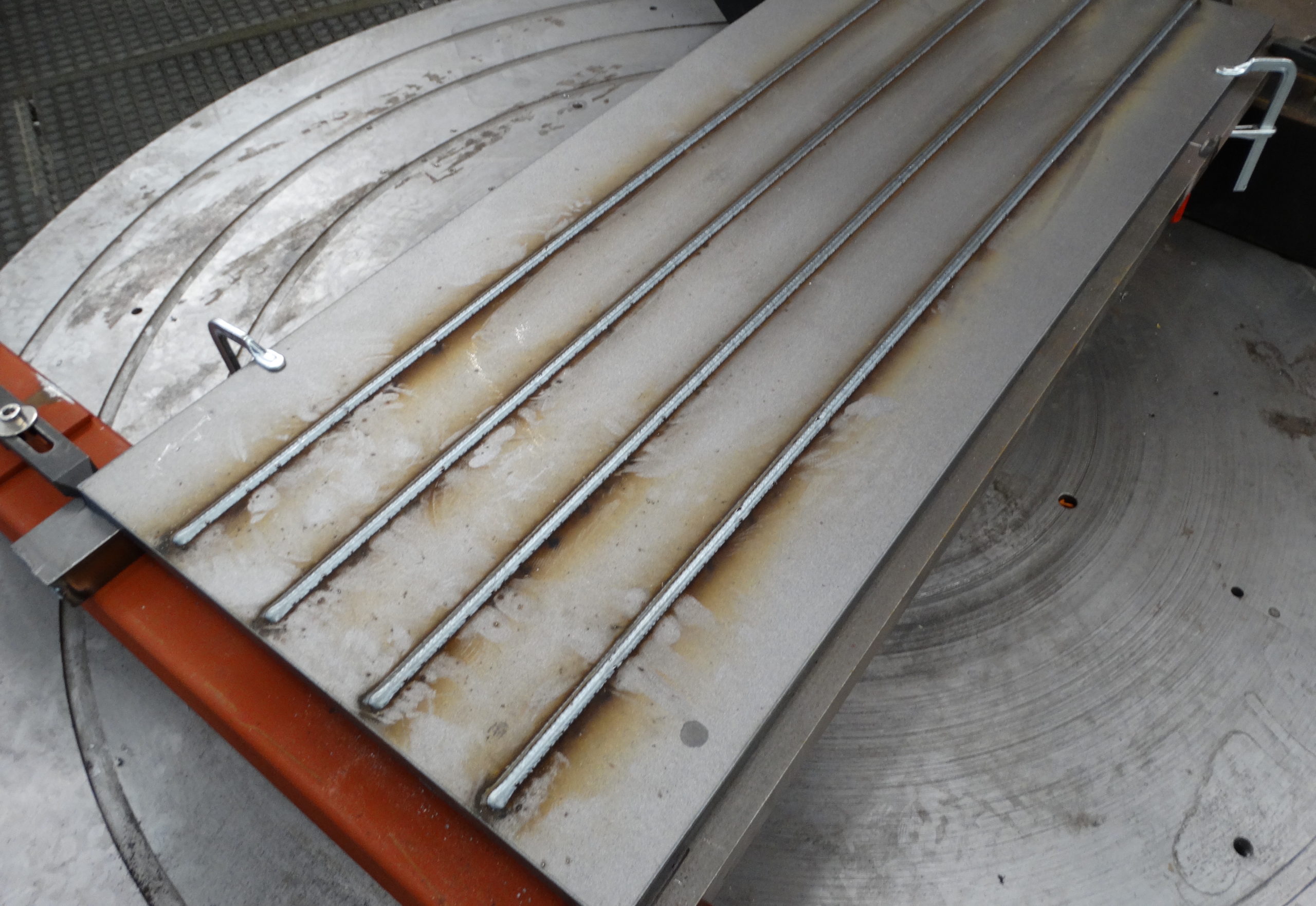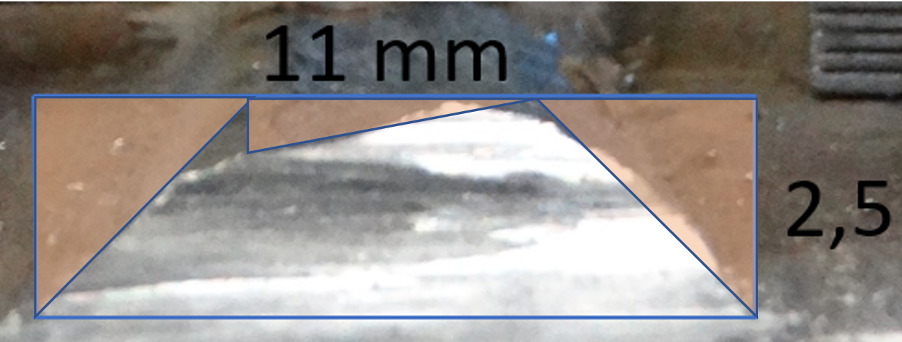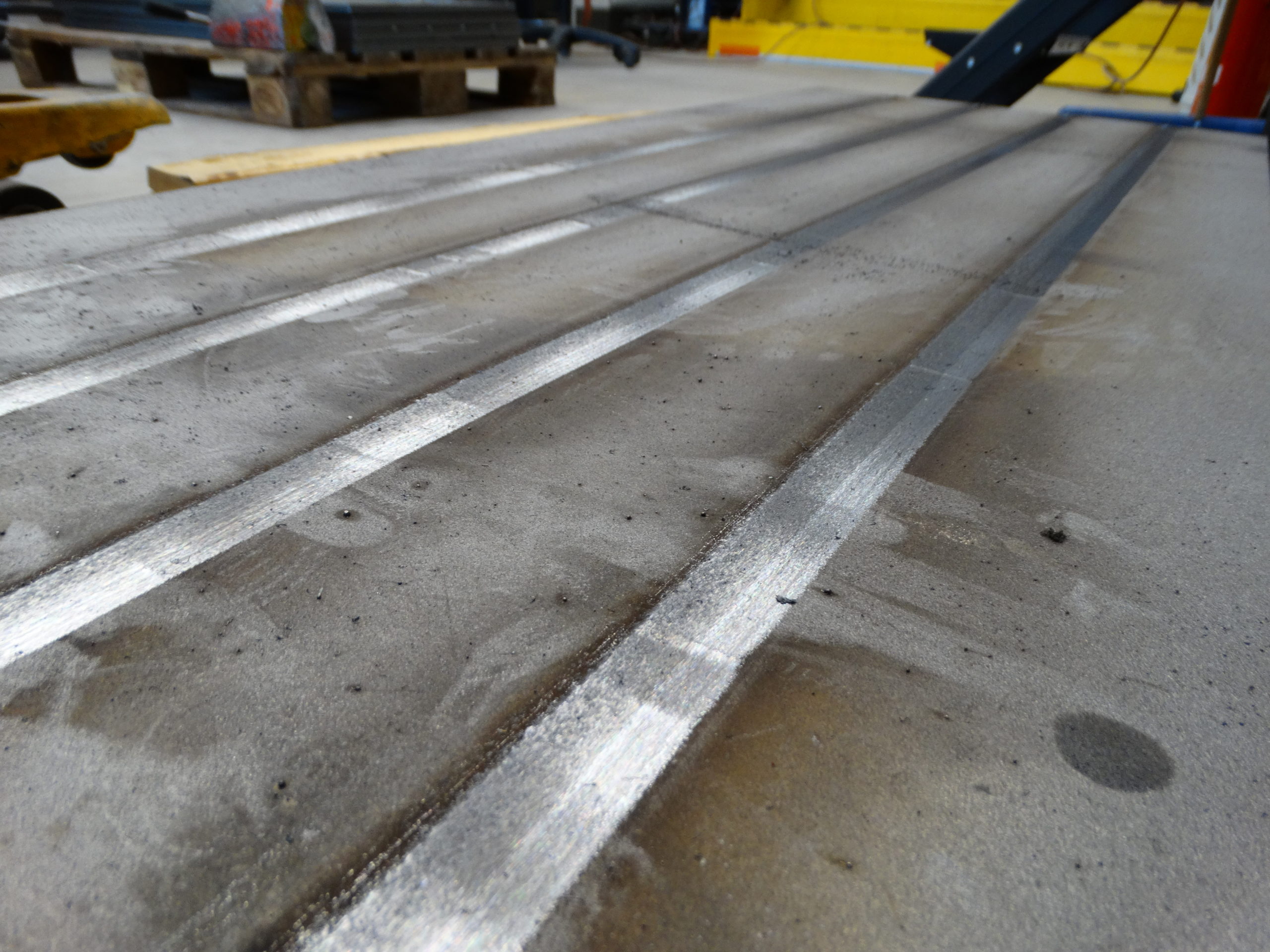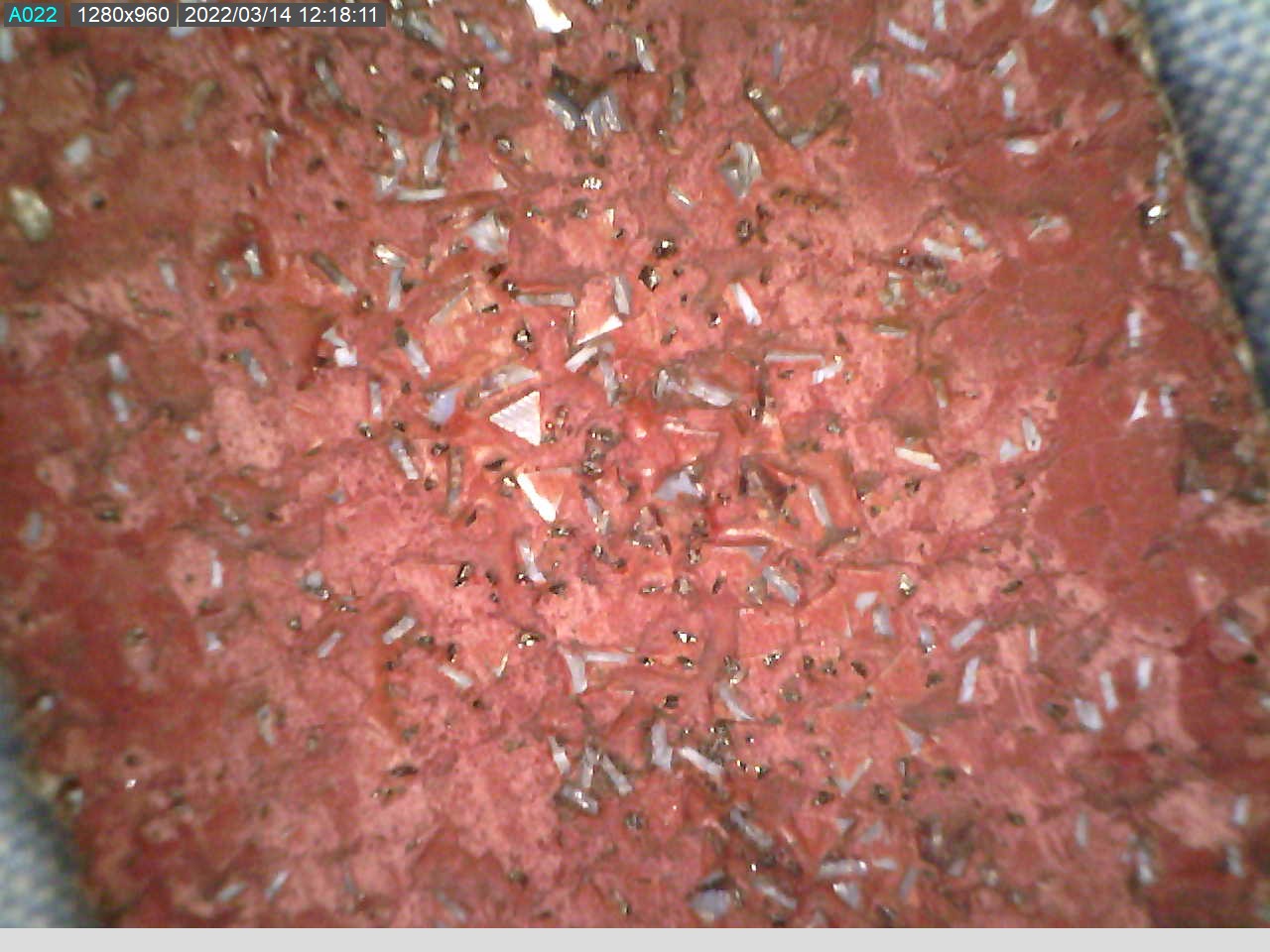
This process report explains how Flexmill robotic weld grinding tools succeeded in removing a 4-meter weld from a workpiece with a temperature of 100° C.
Weld grinding is used in many industrial processes to remove excessive weld and finish workpieces. Foundries use weld grinding for gate removal.
Read our test report for full explanation, results, and expert conclusions!
The objective of the test was to verify the feasibility of Flexmill’s robotic grinding tools for weld removal; how efficient is robotic grinding compared to manual grinding or welding tasks? How does the robotic grinding tool tolerate the heat from welding?
The grinding test was performed with a 20 mm thick plate of mild steel. The plate was heated to 100° C (degrees centigrade) to simulate the temperature after welding.
The grinding test was performed with Flexmill’s M-Series belt grinder with a max power of 3.2 kW. The belt used in the test was 3M’s Cubitron II 784F YF 36+
The test piece was placed inside of Flexmill’s test cell with an ABB robot and a 1-axis work-piece positioner.


A weld of four meters of total length and cross-section area of 19,25 mm2 was made for the test. The amount of weld was 0,15 kg per meter.

The entire weld seam of a total length of four meters was ground on one run. The grinding parameters were slightly changed between different plates. The grinding speed was15-20 mm per second, the contact force was 100-150 Newtons, and the rotating speed of the belt was 25-30 meters per second.
The weld grinding test was completed successfully! The material removal rate of 5-10 kg per hour was achieved and maintained in the test. It corresponds to a typical robotic weld deposit rate. This means that a welding robot and Flexmill grinding robot can operate in a synchronized manner on the same line to run the end-to-end process at a consistent pace.


The test proved that Flexmill’s grinding robot could operate in an automated industrial process at the same pace as a welding robot (5-10 kg per hour and 15-20 mm per second). This enables a constant material flow throughout the process and avoids bottlenecks and production seizures.
The test also validated that Flexmill grinding robot tolerates heat and can grind workpieces right after welding, even up to 100° C of temperature. There is no need to wait for a workpiece to cool down, saving time. The weld grinding robot improves safety compared to manual grinding by preventing burn injuries and melted tools.
The test produced 600 grams of metal dust per 4 meter of weld, which was blasted in the air during the process. Metal dust is highly harmful to human health. Flexmill’s grinding robot cabins feature dust collectors, which collect the residual material, preventing it spreading in the air, and allowing easy recycling.


Should a higher weld grinding capacity be needed, Flexmill’s belt grinder M2000HD can be used to double the power (max. 5.6 kW) combined with harder contacts wheels and 3M’s Cubitron II 984F YF 36+ belt products can deliver even higher material removal rate and a faster grinding speed.
Have you considered automating grinding and other surface removal tasks in your production? 🦾
We can run feasibility tests and proof of concept trials with your work pieces!